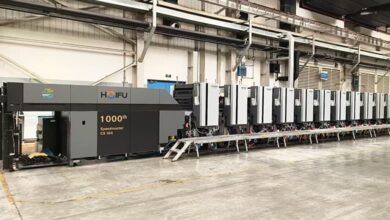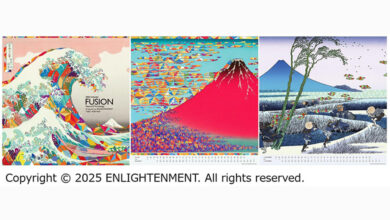
The perspectives for the global beverage industry are excellent, as data provided by British market research institute Euromonitor International and the VDMA Food Processing and Packaging Machinery Association shows. According to this data, 947 billion litres of beverages were consumed globally in 2018. By 2023, the demand is expected to increase even further – by 16.3 percent to over one trillion litres (1,101 billion litres).
As global population increases, so do beverage sales. This growth is especially apparent in emerging national economies, known as the BRICS states. These include Asian, Latin American or African, countries in which the population has a high pent-up demand for consumer goods.
Rising export figures
Accordingly, the global demand for filling machines has also increased. According to VDMA statements, filling and capping machines worth over 7.4 billion euros were exported around the globe in 2018, 3.6 percent more than in 2017. The beverage industry accounts for a high share of these exports. Germany is the export world champion. The country exported filling and capping machines worth more than 2.3 billion euros in 2018. This is equivalent to an increase of five percent compared to 2017. Italy is right behind in second place, with an export value of more than 1.4 billion euros. This number has increased slightly, by about 0.3 percent compared to 2017.
German production of beverage filling machines reached 2.2 billion euros (an increase of 1 percent) in 2018, whilst production of beverage manufacturing machines reached 552 million euros – an increase of 6.7 percent compared to 2017.
Changed consumption conditions
Global consumption of beverages has increased; at the same time, beverages are now being consumed in a completely different manner. Consumer demands regarding the quality and sustainability of products and packaging have increased. Customers today are both well-informed and sensitised. When selecting products, they tend to make more conscious decisions and attach greater importance to ingredients and their origins. As a result, many consumers are actually prepared to pay more for regional and hand-made products.
The increase in out-of-home consumption and the desire for more convenience has lead to a rising demand for individual beverages in light-weight packaging and smaller batches.
Furthermore, the share of consumers that belong to the 50+ generation is higher than average in the field of beverages, with almost 40 percent. In future, these Best Agers will become more and more important as a target group for beverage suppliers. Low-calorie, high-quality and healthy beverages are extremely popular. At the same time, the Silver Generation expects packaging to be designed in a way that makes them easy to open and just as easy to reseal.
Demands on the industry
Flourishing markets invariably promote more competition and intensify the pressure beverage manufacturers are already under; these face fluctuating prices for raw materials as well as a considerable price competition in the food retail trade. This calls for energy-efficient, resource-conserving and flexible solutions for a closed circular economy.
The beverage industry needs to be able to react to the continually changing demands of consumers and trade by providing a variety of products in increasingly shorter intervals. This requires continuous, new product modifications as well as new developments, combined with specific marketing measures for different target groups.
In this area, digital printing provides maximum flexibility. Marketing strategies can be implemented over night, without having to worry about first using up bottle labels currently in stock. The printing process can be used on the new virgin PET as well as on rPET, and uses inks that can be removed from the PET without any residue during recycling.
The beverage industry as well as the associated process and packaging industries are excellently positioned to meet these rising challenges, and offer numerous innovations with regard to machine availability, production and process optimisation as well as the use of digital solutions and Industry 4.0 measures.
These will be exhibited at the upcoming interpack, which will take place in Düsseldorf from 7 to 13 May 2020. A total of 1,544 exhibitors have confirmed that they will be presenting solutions for the beverage industry – including the latest developments along the entire machine and equipment value chain, from various types of containers to materials and recycling. Hall 13 is a key area.
Sustainable products and packaging
When it comes to products and packaging, more and more consumers are paying closer attention to sustainability aspects, and are consciously choosing healthier, regional, fair trade and organic products. Beverage manufacturers and packagers are reacting to customer demands with intelligent technologies, machines and equipment that conserve resources as well as with recyclable materials that can be used in closed cycles.
Global beverage brands, such as Coca-Cola and Pepsi, are banking on sustainable raw materials and one hundred percent recyclability when it comes to primary and secondary packaging. By 2025 – 2030 at the latest – Coca-Cola, for example, aims to return one item of packaging to the recycling cycle for every item of packaging that is brought to market. The company also plans to make every bottle fully recyclable.
In 2019, the beverage giant presented the first sample bottle, which is made of 25 percent food grade ocean plastic. In the course of this partner project between Ioniqa Technologies, Indorama Ventures, Mares Circulares (Circular Seas) and the Coca-Cola Company, an initial 300 bottles have been produced, with the aim of illustrating the potential of “enhanced recycling”.
According to company statements, this innovative method is to ensure that in future, used plastic – regardless of its quality – can be turned into high-quality plastic. “These enhanced recycling technologies are tremendously exciting. And not just for us, but for the entire industry as well as society. They are accelerating our prospects of a closed reusable materials cycle for plastic. That’s why we are investing in these technologies,” says Bruno van Gompel, Technical and Supply Chain Director at Coca-Cola in Western Europe, when asked to explain Coca-Cola’s commitment.
Holistic recycling
The Krones group’s MetaPure recycling facilities are one example of enhanced recycling technologies. These facilities can recycle between 150,000 and 200,000 tonnes of PET bottles per year – in various material qualities, including food grade PET. The objective is to ensure that beverage bottles and other plastic packaging can be recycled completely, including their materials.
Krones subsidiary Dekron presents another successful example: the DecoType Select direct printing machine. The machine can print on containers made out of 100 percent rPET using ink that can be removed from the PET without any residue during recycling.
100 % rPET
At the end of 2019, German system provider KHS first presented its packaging development that focuses on the entire life cycle to the public. The aptly named Beyond Juice is a new bottle development for sensitive beverages such as fruit juices. The recyclable PET bottle is made out of 100 percent recyclate and is equipped with the FreshSafe PETâ barrier solution. This ensures that fruit juices and spritzers have an up to ten times longer shelf life compared to uncoated plastic bottles. A wafer-thin glass coating makes this possible, preventing oxygen from entering the bottle and carbon from escaping.
“Beyond Juice is more than just a fruit juice bottle; it is our tangible answer to the challenges the beverage industry currently faces. In light of the current discussion on plastics, environmentally friendly and practical solutions are becoming more and more important,” says Philipp Langhammer, Product Manager Barrier Technology at KHS Corpoplast.
The label area is particularly small; this allows sorting facilities to identify bottles as PET bottles and thus recycle them without problems. The right glue furthermore ensures that labels can be removed easily, and prevents contamination during the recycling process.
“The seal on the label allows consumers to take the truly excellent recyclability into account when making their purchasing decisions at the supermarket,” emphasises packaging engineer Julian Thielen, who works for Interseroh, an environmental services provider.
When sold in batches such as six packs, no foil is used; instead, the bottles are held together by glue dots, which can be removed easily during recycling. “By eliminating the surrounding foil, we have further reduced packaging waste by up to 90 percent,” says Philipp Langhammer.
Energy-efficient plants
Sustainable product solutions need smart production processes that increase energy efficiency during production, lower carbon emissions in the long term and reduce material and resource consumption. Digital interconnectivity and monitoring help optimise product quality and plant availability.
Next generation bottle fillers, for example, require up to 20 percent less energy, and at the same time reduce carbon emissions by up to 50 percent – all thanks to optimised vacuum pumps. “We have installed pressure sensors in every single filler valve. These sensors seamlessly identify any deviations from set values as well as breakages,” says Manfred Härtel, Product Manager Filling at KHS, explaining the automated processes used in the Innofill Glass DRS bottle filler. A camera-assisted controller monitors the high-pressure injection system and regulates the development of foam, which in turn reduces product losses by up to 50 percent. The use of process warmth combined with a lower water consumption during cleaning also have a positive impact on the machine’s energy balance and reduce production costs.
Artificial intelligence
At the end of 2019, the Ende group introduced the prototype of a self-learning filling valve to the public. Aided by artificial intelligence, the valve is expected to optimise the production process whilst at the same time significantly reducing operating and maintenance costs. “To achieve this, we have developed cyber-physical systems that allow the valves themselves to find the best way to fill a certain container with a certain beverage – in the most efficient manner and as quickly as possible,” says Jochen Ohrem, Expert of R&D Management at KHS, explaining the new development. When learning, the valve focuses on self-configuration, analysis, self-diagnostics and, finally, self-optimisation.
Augmented Reality
interpack exhibitor Krones AG also uses viable technologies. The German group offers its customers 24/7 support provided by service specialists, using remote support to troubleshoot and resolve problems should unscheduled downtimes and short-term difficulties occur. In addition to conventional support by phone, plant operators can also request augmented reality support. This option uses smart glasses, which give the support specialists virtual, on-site access.
However, Krones banks on prevention to ensure that one day, downtimes will be a thing of the past. The data-based system is able to identify and resolve weaknesses in the production process at an early stage. Support specialists continuously monitor the production process; they access the machine’s data from the outside, notify users of emerging problems in due time and guide plant operators through the troubleshooting and resolution process should worst come to worst.
Autonomous production is the future
Innovations like these, and the many others that will be exhibited at interpack 2020, prove that smart factories are no longer visions of the future but are already a reality today.
We do not need a crystal ball to predict that cyber-physical systems (CPS) will be a dominating presence in the future of beverage production. Unaided by humans, these systems independently control production and processes, share information among one another, and plan and trigger actions independently. This is certain to affect operation processes in companies, but it won’t stop there. We can expect this new technology to include partners, suppliers, warehouses and customers, which will all be connected to one another.






146 Comments